Is the Grand Tour team time trial a dying art?
Despite its long history, recent trends suggest that the team time trial is falling by the wayside when it comes to Grand Tour route design. We headed to the Tour de France paddock in Cholet to see how teams execute the perfect ride in a discpline that is far from the norm in modern Grand Tour racing
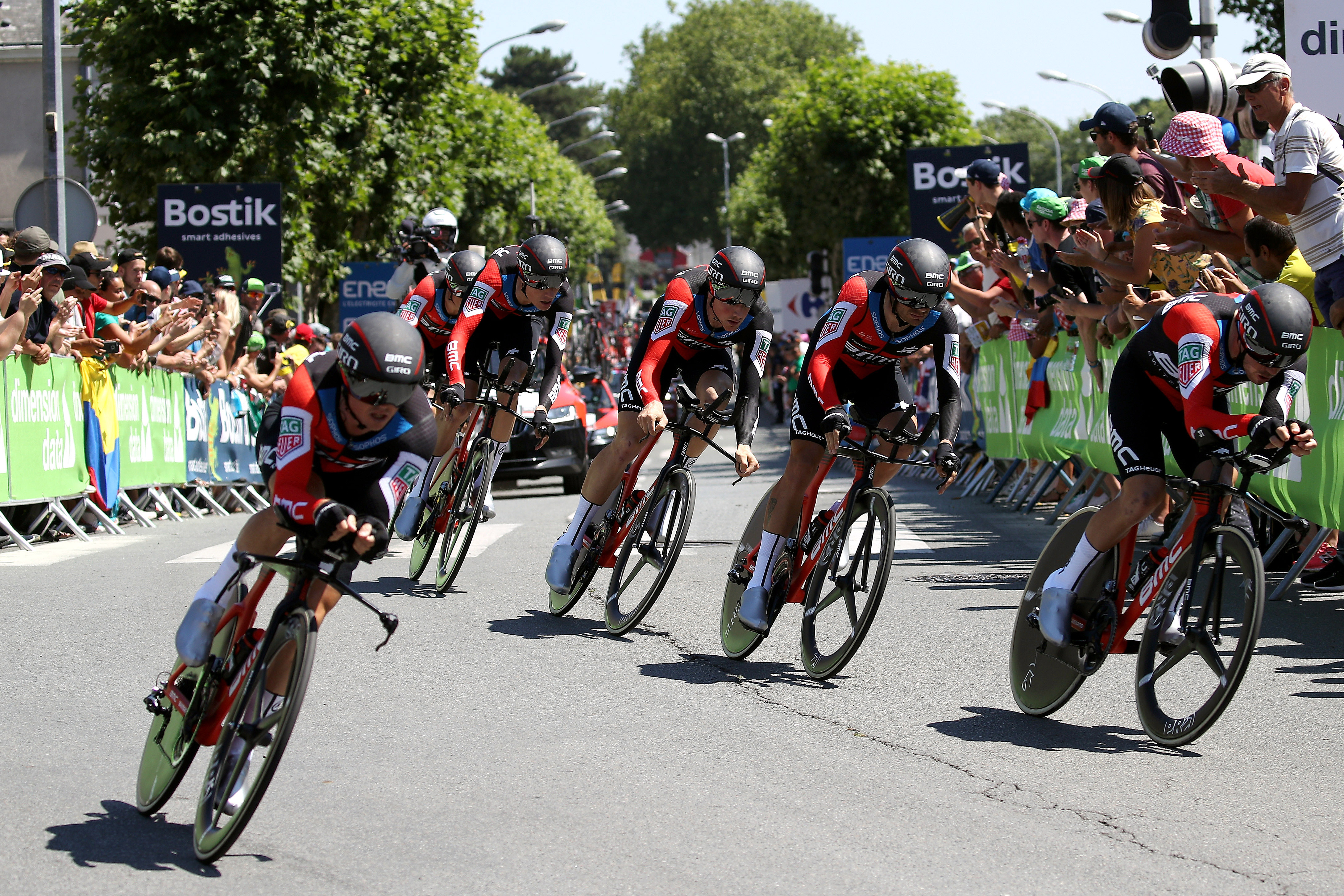
“For me the team time trial is the best stage you can win on a race like the Tour de France because it shows that all the work the team put in — from the directeur sportif, the staff and the trainers — has really worked. They really share the prize,” says BMC directeur sportif Fabio Baldato after his team’s TTT victory on stage three in Cholet — three years after they won the last TTT to feature in the Tour de France, in 2015.
Unfortunately, it appears the course designers of the Tour, and other Grand Tours, don’t really share Baldato’s reverence for the art of the team time trial. There have been just four team tests against the clock in the last 13 years. That’s vastly different from the unbroken streak of TTTs in the Tour from 1976 to 1995 — including 153km worth of TTT in 1978.
When this is combined with only rare appearances throughout the rest of the season it poses a tricky conundrum for teams on how much effort to put into their training and selection for the event.
>>> New mixed team time trials branded ‘Mickey Mouse event’ by team bosses
They could take the view that a strong focus on the TTT is a waste of valuable time, but it is rare that an overall winner will have a poor TTT unit around him.
Certainly that is the opinion of EF Education First-Drapac directeur sportif Charly Wegelius, who over the winter hired a race track to hone the team’s TTT skills so it could keep pace with team leader Rigoberto Urán’s GC rivals.
Baldato agrees there is no quick way to build a competitive TTT squad. “We go weeks ahead to prepare the guys at the training camps,” he says. “Sometimes new riders aren’t happy to do it because this kind of training is stressful, and you need to find a good road away from traffic, but you need to practise. They also have specific work at home that gets them ready when they come to the race.”
Get The Leadout Newsletter
The latest race content, interviews, features, reviews and expert buying guides, direct to your inbox!
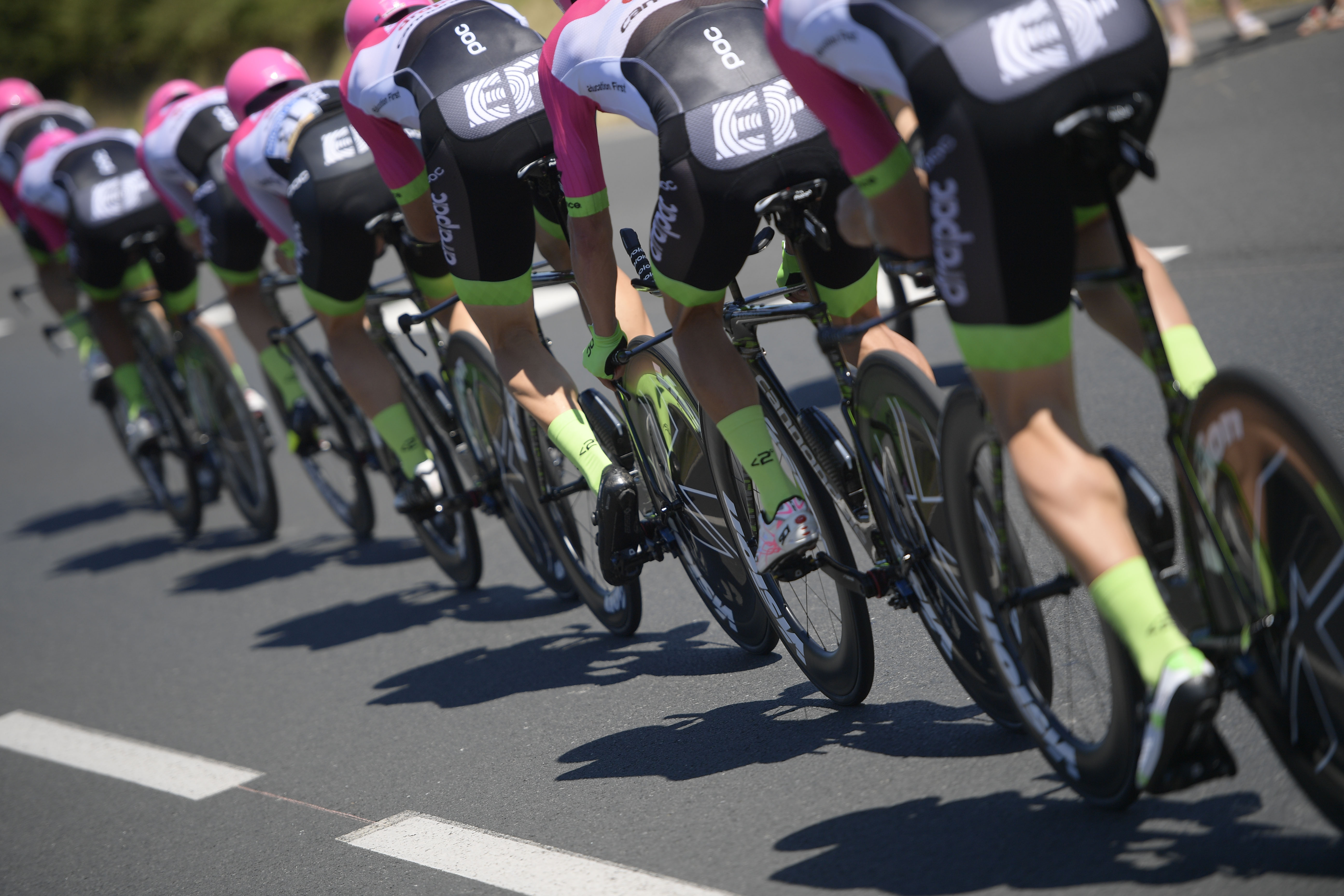
The importance of team selection is also crucial for every contender, especially now that team numbers have dropped from nine to eight. “We’ve got five time trial specialists here out of the eight guys,” explains Matt White, Mitchelton-Scott directeur sportif. “All five will be riding for us at the World TTT Championships, so we are working out a way to utilise our strengths with the big guys we have here.”
Utilise White and Mitchelton-Scott did as they propelled GC contender Adam Yates from 73rd to 20th with a fourth-place finish coming in just nine seconds behind stage winners BMC. The decision to load a team with rouleurs proved to be futile as Adam Yates fell by the wayside as the race hits the mountains but White believed it was a risk worth taking.
“There are teams who have brought only two big guys here and two minutes is hard to get back at the Tour,” he says.
Moulding a unit
The technical nature of team time trialling means it isn’t just a case of placing a squad of specialists together and ensuring they compete as a team regularly. While Mitchelton-Scott’s trio of Michael Hepburn, Luke Durbridge and Daryl Impey have ridden 15 TTTs together before, Team Sky have a slightly different approach.
“We started training for this in 2010 and every time you do a team time trial you make changes and tweaks and keep moving it on,” reveals Team Sky performance manager Rod Ellingworth.
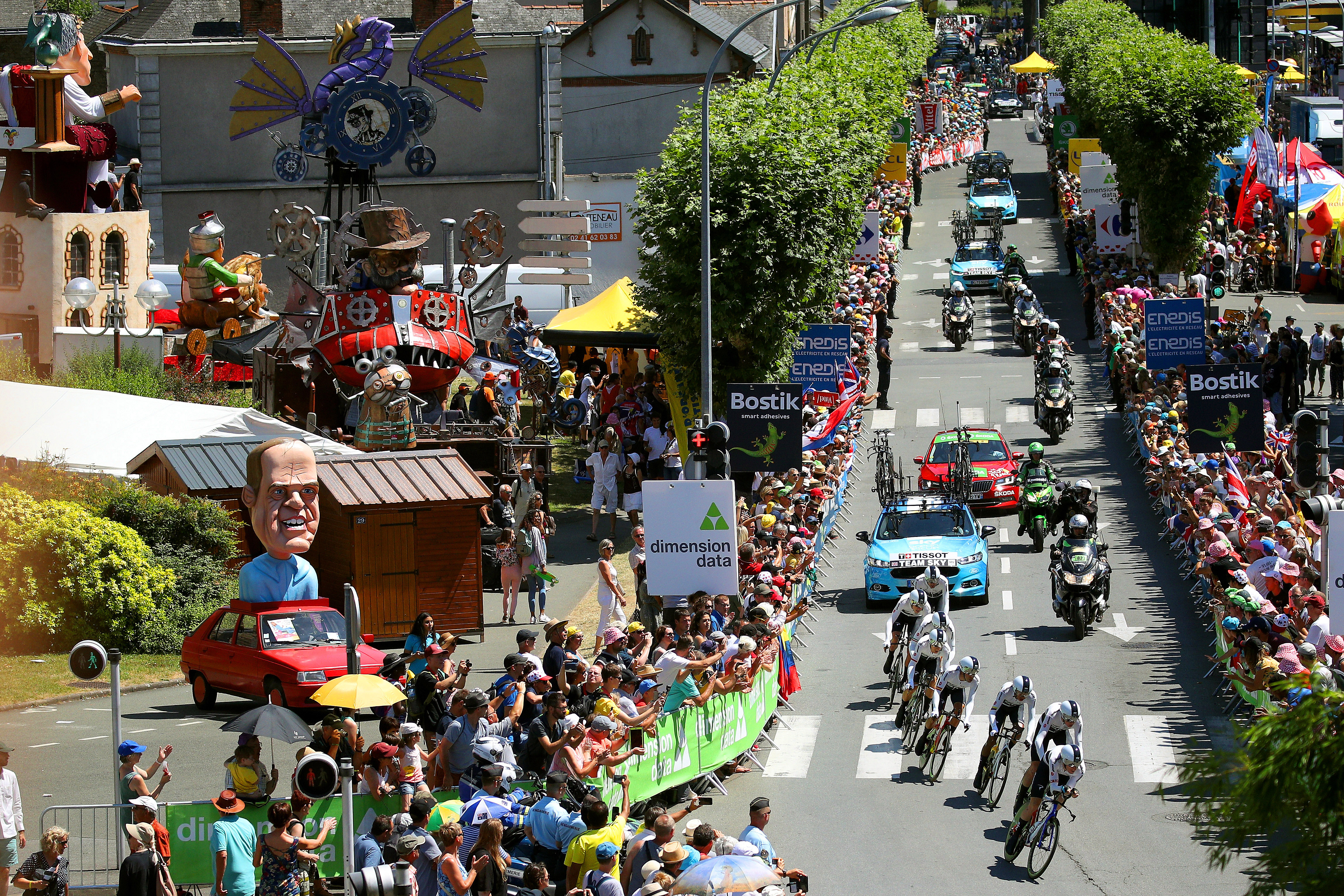
“The main thing is concentrating on the new riders in the team; the guys that have been on the team all along are obviously still learning and you never stop doing that. For example [Jonathan] Castroviejo is coming from a well-drilled team time trial team [Movistar] so he may have something to add to our team and into the mix.”
>>> As it happened: Tour de France stage three team time trial
However, as some pros may not have as much experience as riders such as Castroviejo, Ellingworth adds, “It’s about concentrating on them and getting them into the rhythm because they are pro bike riders and know what they are doing, it’s just a case of making the tweaks and getting them drilled.”
Team Sky may not have specific training laid out for their riders but use modelling on the TTT courses to gain rough guidelines of average and maximal speeds and potential length of turns, as well as using mapping app Veloviewer to recon the routes.
Death of the Grand Tour TT
The reluctance of some teams to focus on ‘the race of truth’ — UAE Team Emirates, for example, only brought two rouleurs to the Tour — may seem strange given the importance placed on the science of aerodynamics, training and nutrition in recent years.
Time trialling is, after all, surely the discipline where science will give teams the biggest advantage. However, that has coincided with the number of time trialling kilometres — both individual and team events — having dropped off a cliff.
In time trialling’s Grand Tour heydays of the late 70s and early 80s it was common to see over nine per cent of the overall Tour de France distance contested through time trials.
But now a Tour route with two stages against the clock is seen as time trial heavy.
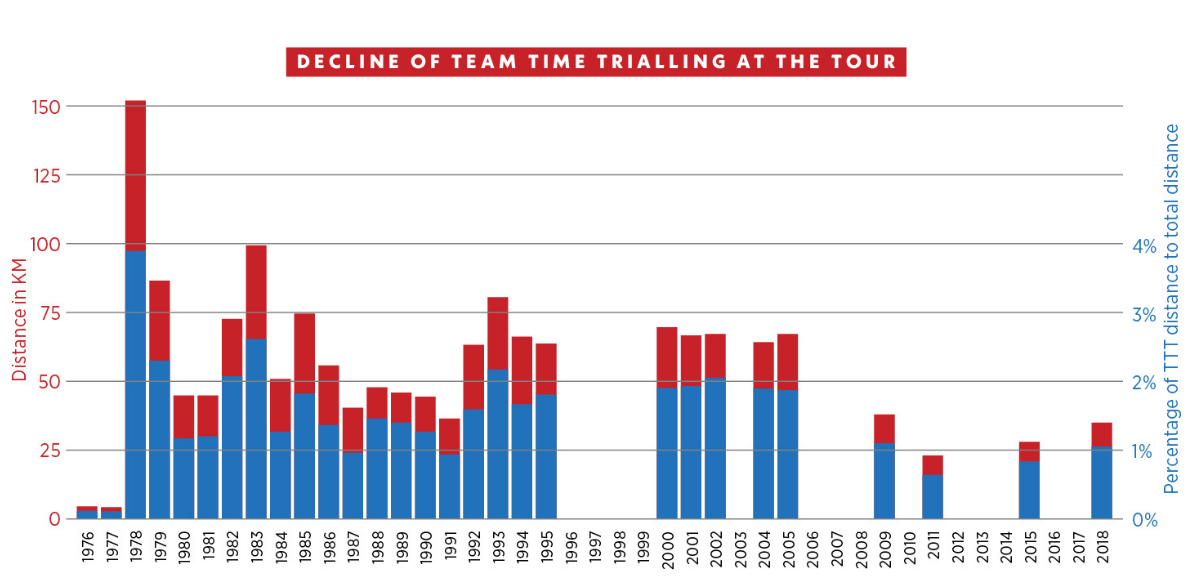
Time trialling kilometres accounted for just over one per cent of the entire 3,540km Tour de France route in 2017. In comparison, 15 years ago, in 2003 the Tour de France had over five per cent of its overall distance against the clock.
This year has seen a slight increase thanks to last week’s TTT. However, the prevailing trend for fewer TT kilometres isn’t restricted to the Tour, with the Giro d’Italia clocking a record low percentage of time trialling this year.
So why has the discipline become an endangered event rather than an ever-present fixture each year? BMC performance coach Marco Pinotti says that organisers plan routes to attract riders, often the climbers who provide the fireworks in the mountains. But he believes the TTT should always have a place in the Grand Tours.
“It is an event that works, because it’s an individual sport but without the team you can’t go anywhere even if there is no team time trial,” he says. “So when you have the whole team going to the podium that is something unique. I welcome at least one team time trial in every Grand Tour, and especially now we won’t even have a World Championship from next year on.”
White agrees: “I love it; I think it’s a great discipline and I think it should be included in every Grand Tour but leave it up to the organiser for which type of team time trial it is — a hilly one, flat one, short one.”
If the 2018 Tour represents a change in direction than maybe they’ll get their wish.
The riders' view - Stefan Kung, BMC
It’s really important that you are always training for this particular discipline, because when you get to the race you can only do the little things about the order — who is in which position, who is behind each rider to get the best benefit from each other.
The rest you have to train beforehand to get the rhythm going. We have a really good team behind it with Marco [Pinotti] analysing everything, so we have just got to perform because we are all aware of how important it is to the team.
We don’t talk about if we win the stage who is going to cross the line first; for us it's important to win and to take as much time out of it compared to the other competitors.
My first role is to set the pace and get the team going and then it’s more about the specialists like Paddy Bevin or myself to take longer pulls to smooth out the whole team. If you have a guy who pulls half a minute it calms down the team, but everybody contributes as much as all the others to the performance.
Jonathan Castroviejo, Team Sky
Because we don’t have a TT in this Tour for a specialist the TTT is very important. There is one TT on the final stage but it is more suited to a climber, so it is a good stage to put some seconds towards the powerful GC contenders.
A TTT is always a difficulty because us eight riders don’t stay together all the time — one may go to the Dauphiné and others go to other races.
It is also a much more technical stage. In an individual time trial it's only you, with few corners and you aren’t changing the pace, whereas in a TTT it’s very different. You must know the limit to pull and not go too much [into the red] because you must go back in the row, which can be difficult.
The second part of this Tour is very hard, but for me this is the most important stage.

Thank you for reading 20 articles this month* Join now for unlimited access
Enjoy your first month for just £1 / $1 / €1
*Read 5 free articles per month without a subscription

Join now for unlimited access
Try first month for just £1 / $1 / €1
Paul Knott is a fitness and features writer, who has also presented Cycling Weekly videos as well as contributing to the print magazine as well as online articles. In 2020 he published his first book, The Official Tour de France Road Cycling Training Guide (Welbeck), a guide designed to help readers improve their cycling performance via cherrypicking from the strategies adopted by the pros.
-
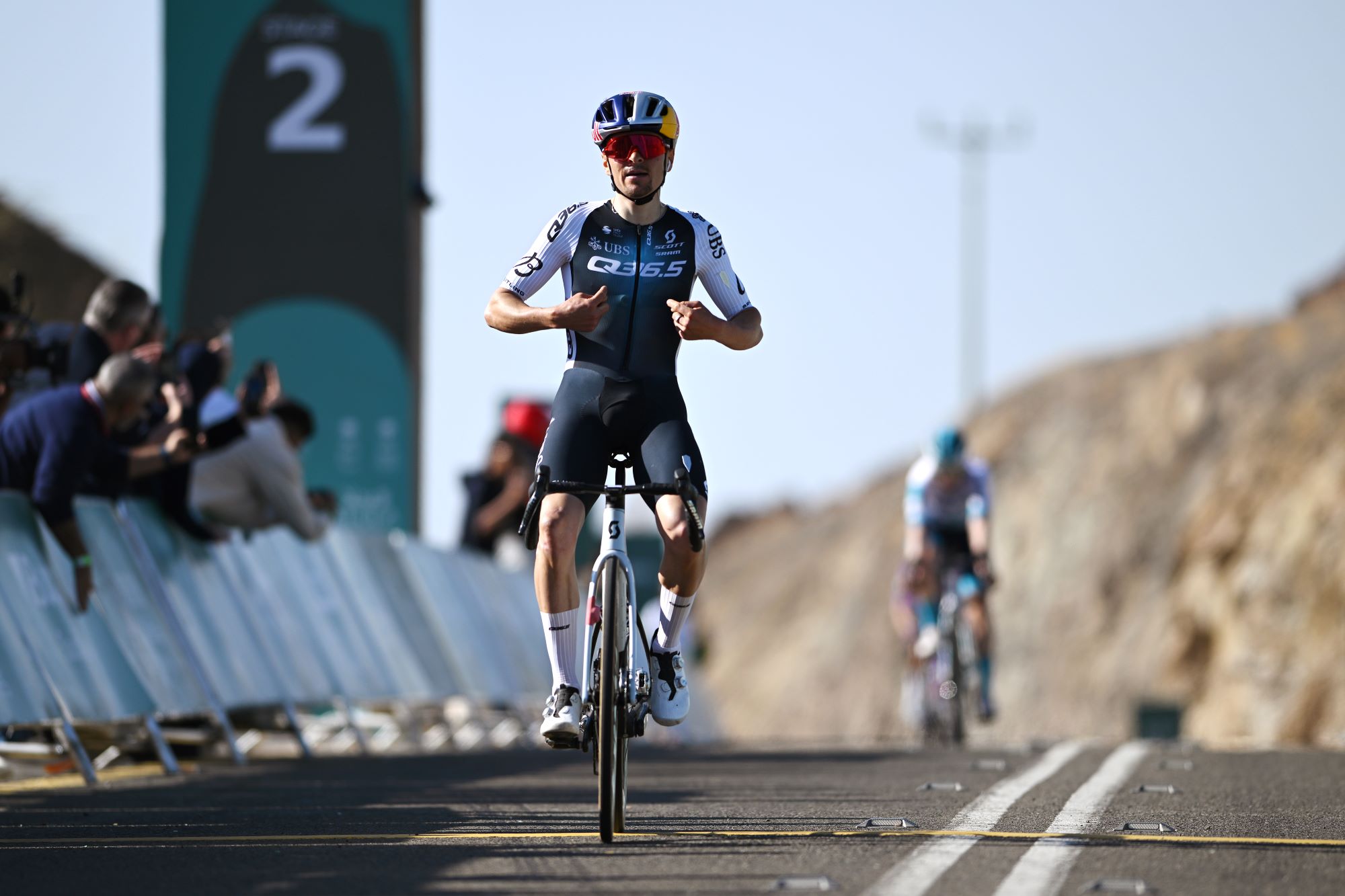 What does Q36.5 mean? We asked the people behind the Italian kit brand that sponsors Tom Pidcock's team
What does Q36.5 mean? We asked the people behind the Italian kit brand that sponsors Tom Pidcock's teamQ36.5's Luigi Bergamo and Lodovico Pignatti Morano take on Cycling Weekly's Q&A
By Tom Thewlis
-
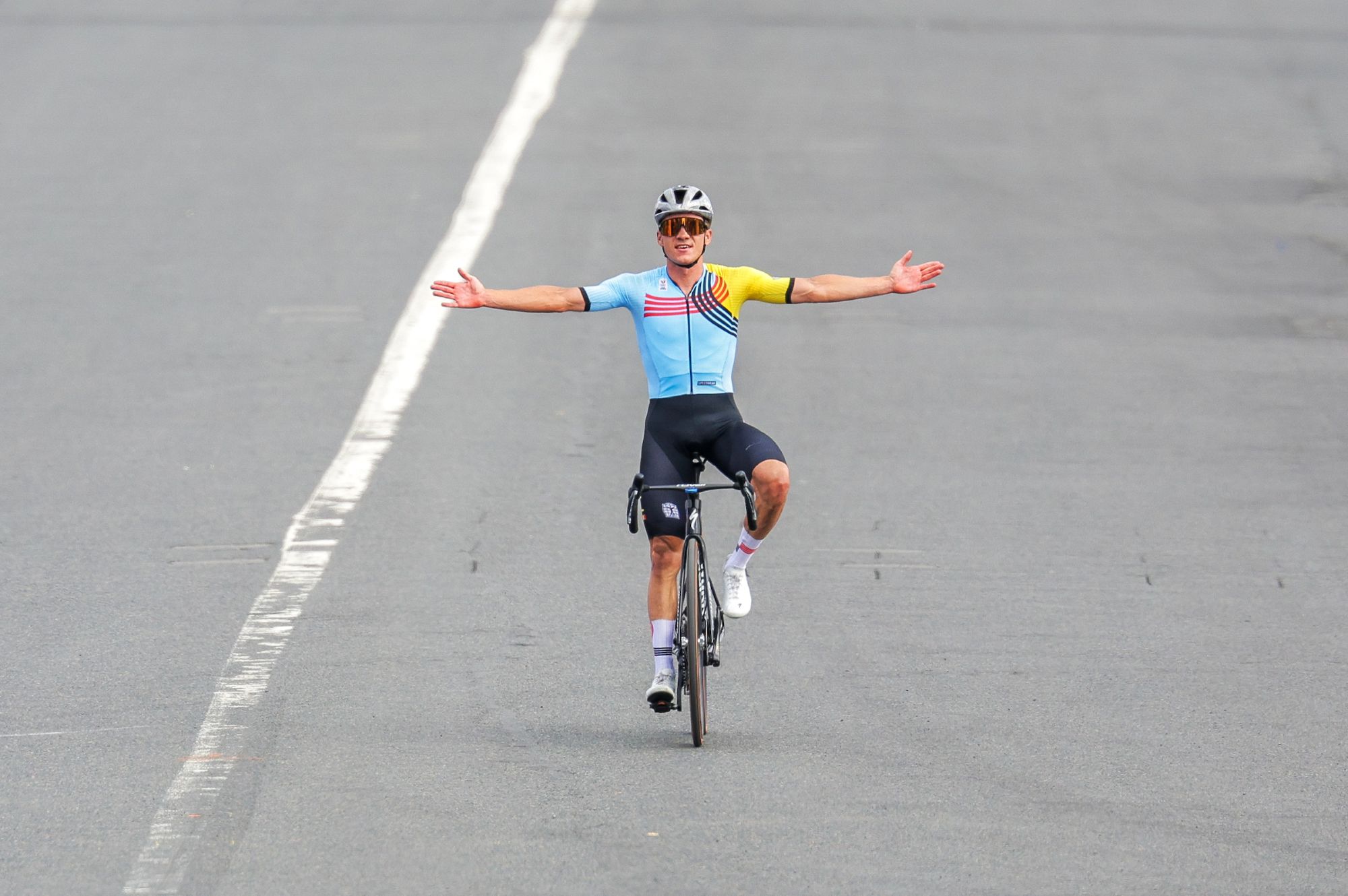 'If I were a tennis player then my career would be over': Remco Evenepoel contemplated early retirement after serious training accident
'If I were a tennis player then my career would be over': Remco Evenepoel contemplated early retirement after serious training accidentDouble Olympic champion was left with nerve damage and says his shoulder is not yet fully healed ahead of his return to racing at Brabantse Pijl
By Tom Thewlis